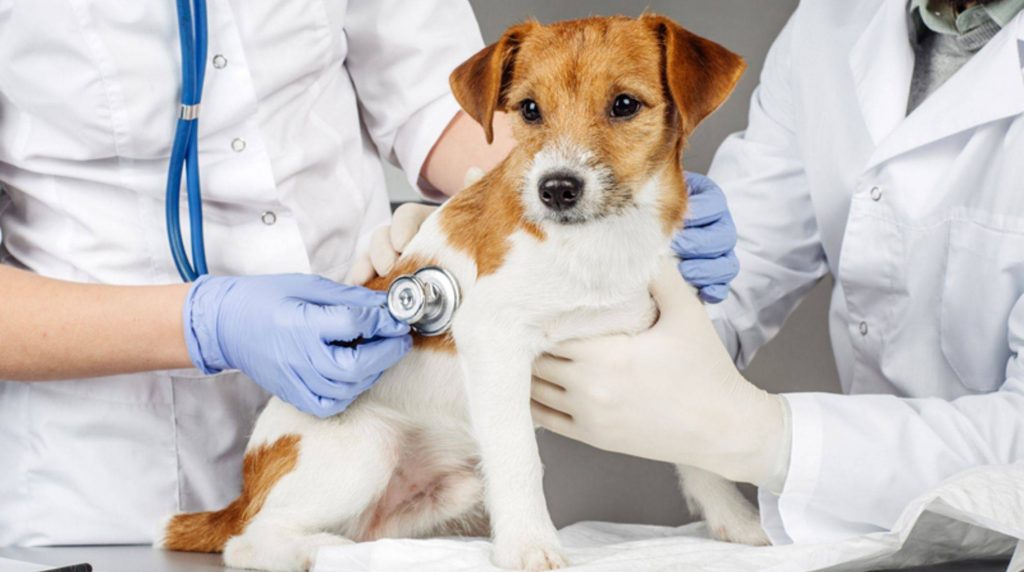In most cases, high blood pressure in dogs is a side effect of other diseases; Rarely does blood pressure rise to levels that are hazardous to health without any apparent cause. Here, you can determine when you should have your dog’s blood pressure measured and what can trigger high blood pressure.

High blood pressure is a common problem among humans. It affects the entire organism until, without treatment, organ damage and other secondary diseases occur at some point. However, high blood pressure in dogs rarely occurs as a cause of the illness but mainly as a symptom. Either way, it’s essential to identify and treat it as early as possible before it can cause further damage.
What is high blood pressure in dogs?
The heart pumps blood through the arteries to supply all body cells with sufficient nutrients with every beat. Since the streets have a specific resistance, this creates pressure; the more blood the heart pumps into the aorta per minute, the higher the tension in the vascular muscles and the less flexible the vascular wall, the higher the blood pressure. The pressure is most elevated immediately after the heartbeat and lowest just before the next beat when the ventricles fill with blood again. Therefore, blood pressure is usually given in the maximum or systolic value and the minimum or diastolic value. The unit of measurement is millimetres of mercury, abbreviated to mmHg.
It is difficult to measure the lower value correctly with animals, so the veterinarian looks mainly at the upper value. Healthy blood pressure in dogs averages around 134 mmHg, with sighthounds such as the greyhound (149 mmHg) and small dog breeds such as the dachshund (142 mmHg) having higher blood pressure than large dog breeds such as the labrador (118 mmHg) or golden retriever (122 mmHg). If your blood pressure deviates by 10 to 20 mmHg above or below the respective average value, this is not a cause for concern. In addition, it is advisable to discuss with the veterinarian whether high blood pressure in dogs requires treatment. If you are unsure what values are typical for your dog, ask your veterinarian for advice.
How is high blood pressure diagnosed in dogs?
Dogs, like humans, use a blood pressure monitor. Your dog gets a cuff strapped around the front leg, below the elbow joint over soft tissue. This doesn’t hurt your four-legged friend, even if the cuff has to fit tightly to measure blood pressure correctly. Nevertheless, it is somewhat uncomfortable and exciting for the animal, which causes the blood pressure to rise in the short term. Therefore, the veterinarian measures the blood pressure at least three times so that your four-legged friend can calm down in between and his typical values are displayed. It’s best to keep your dog company when you do this so that it feels more reassured and safer.
It is more challenging to determine high blood pressure in dogs without a measuring device. Symptoms vary greatly depending on the underlying condition that triggered the high blood pressure. If your dog is extremely thirsty, has a nosebleed, is short of breath or has a loss of appetite, you should go to the vet and have their blood pressure measured during the examination. Other signs that can indicate diseases associated with high blood pressure are listlessness, depression, cramps and seemingly reasonless, constant barking.
Causes of high blood pressure in dogs
If your dog suffers from high blood pressure, the veterinarian will look for the causes and ask you about other symptoms and abnormalities. It is scarce that the vet does not find a reason and the high blood pressure itself is the disease. In this case, a genetic predisposition can play a role, but more details are not yet known in veterinary medicine. Typical illnesses that result in high blood pressure in dogs are:
● Cushing’s syndrome
● Chronic renal failure and other kidney problems
● Diabetes mellitus
● heart disease
● Thyroid problems
Regular blood pressure monitoring is also advisable if your dog is overweight or older. The veterinarian will essentially treat the underlying disease – then the blood pressure should also drop back to a healthy level as a result. If it doesn’t, if it’s incredibly high or the doctor can’t find the cause, he prescribes medication such as beta-blockers that lower blood pressure.








